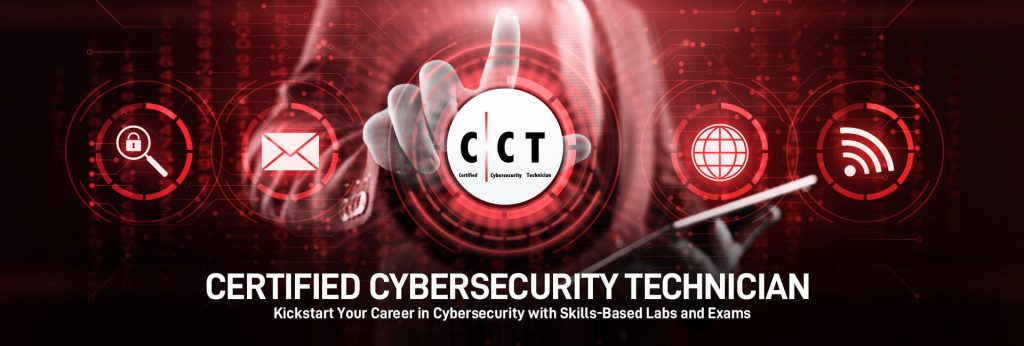


Multi-Cloud Red Team Analyst (MCRTA) is designed for cybersecurity enthusiasts who want to embark on their Cloud Red Team journey. In this comprehensive program, you’ll dive deep into the fundamentals of AWS, Azure, and GCP Cloud Security. The focus is on practical skills, ensuring that you gain hands-on experience in Multi-Cloud Red Teaming.
Introduction to Multi-Cloud Red Team

The Complete Ethical Hacker’s Toolkit is a comprehensive learning path offered by EC-Council Learning. This skill path consists of 15 micro courses designed to help you either start or transition into a career in ethical hacking and penetration testing.
Practical Linux for Pentesting & Bug Bounties
Deep Web and Cybersecurity
A Guide to Hands On Network Pentesting
Hands-on Penetration Testing with Netcat
Session Hijacking and Prevention Techniques
Web Hacker’s Toolbox: Tools Used by Successful Hackers
Nmap for Ethical Hacking, Network Security, & Bug Bounties
Foundations of Hacking and Pentesting Android Apps
Hands-on Linux for DevOps & Cloud Engineers
Communication with IoT
Troubleshooting Slow Network with Wireshark
Web Application Security Testing with Google Hacking
Beginners Cryptography Demystified
Jupyter Notebook for Everyone
Mastering Nuclei with Automation for Pentesting & Bug Bounty

The Advanced Software Exploitation (ASE) course offers security professionals an opportunity to test and develop their skills like never before. During this course, students will learn to identify common vulnerabilities and then use them to develop exploits for a wide range of software applications, including popular Windows applications, interpreted languages, and Web browsers.
In the first half of the course, attendees will use fuzzing, reverse engineering, and source code auditing, to attack a wide variety of applications (e.g. iTunes, Firefox, Vulnserver, etc.) and then use proven exploitation techniques to develop an exploit for one of the VMs (Windows 7, Windows 8.1 and Windows 10).
Then, in the second half of the course, the focus will shift from classic vulnerabilities to more advanced ones. In this section, students will learn how to escape Java sandbox using a type confusion vulnerability, how to circumvent the ASLR without pointer leaks, and how to use precise heap spraying, just to name a few.
By the end of this course, students will know how to find software vulnerabilities using fuzzing, reverse engineering, and source code auditing, and then how to write their own exploits in Python, JavaScript, or Java.
Fundamentals: Intro
Fundamentals: Stack Buffer Overflow
Fundamentals: Structured Exception Handler Overwrite
File Format Fuzzing: Intro
File Format Fuzzing: The Peach Fuzzer
Network Protocol Fuzzing: Vulnerability Discovery
Network Protocol Fuzzing: Exploitation
Attacking Web Browsers: Vulnerability Discovery
Attacking Web Browsers: Exploitation
Practical Patch Diffing
Exploiting vulnerabilities in the Oracle JVM: Vulnerability Discovery
Exploiting vulnerabilities in the Oracle JVM: Exploitation
Advanced Windows exploitation
Conclusion

The Certified Cybersecurity Technician (CICT) is an entry-level cybersecurity program created by EC-Council, the creator of the Certified Ethical Hacker (CIEH) certification, to address the global demand for a qualified cybersecurity workforce. EC-Council developed the CICT to provide individuals starting their careers in IT and cybersecurity with a certification that validates their hands-on technical skills.

With all the cybersecurity systems we have developed, we still aren’t immune enough from one of the biggest cybersecurity threats. Users are easier to hack than computers and only one human mistake can ruin even the most advanced cybersecurity system. That’s why we created the course “Social Engineering & Phishing Mastery” which uncovers tactics and techniques known as social engineering. You’ll learn how attackers gather information on their targets and what information available online is useful for them. You’ll find out how to secure Red Team infrastructure, prepare an efficient payload, and bypass security solutions. All of that working with publicly available tools deployed by scammers every day. Outthinking attackers is just one part of this course. You’ll also cover best practices for reporting and discover how to use what you’ve learned on this course to protect the cybersecurity infrastructure of your company or organization.